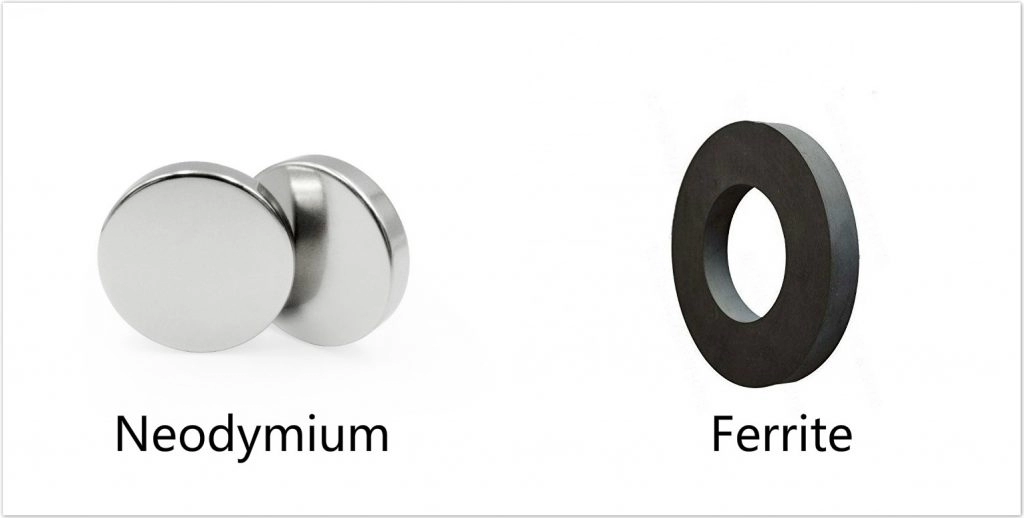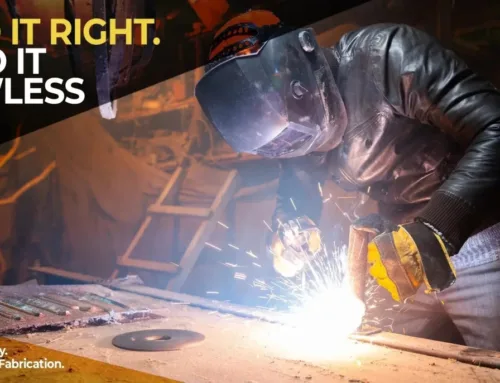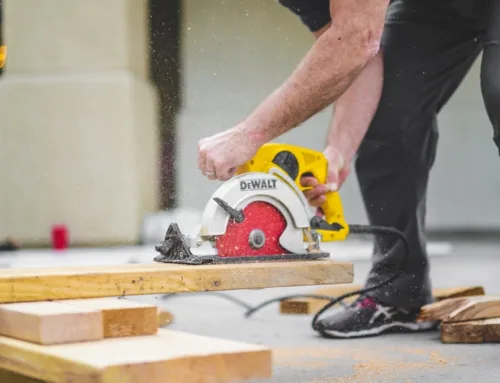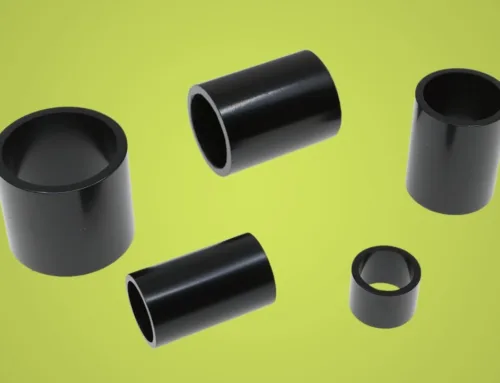What Are Neodymium Magnets
Neodymium magnets, also called NdFeB or rare earth magnets, are made from a combination of neodymium, iron, and boron. They belong to the strongest class of permanent magnets currently available, offering extremely high magnetic performance in a compact size.
Key Properties
- Exceptional strength – Up to 10 times stronger than standard ceramic (ferrite) magnets.
- Brittleness – Despite their power, they can chip or break if dropped or struck.
- Corrosion sensitivity – Prone to rusting without protective coatings such as nickel, zinc, or epoxy.
Typical Industrial Applications
Neodymium magnets are widely used where high magnetic force is essential and space is limited. Common uses include:
- Electric motors and wind turbine generators
- Hard disk drives in computers
- Magnetic resonance imaging (MRI) equipment
- Precision tools and measuring devices
- High-end audio equipment and speakers
Manufacturing Process Overview
The production of neodymium magnets involves:
- Powder preparation – Neodymium, iron, and boron are melted, cast into alloys, and ground into fine powder.
- Pressing – Powder is pressed into molds with a strong magnetic field, setting the magnet’s orientation.
- Sintering – The pressed shapes are heated in a vacuum or inert atmosphere to fuse particles together.
- Cutting and coating – Magnets are machined to size, then coated to prevent corrosion and improve durability.
What Are Ceramic Magnets
Ceramic magnets, also called ferrite magnets, are made from a mix of iron oxide and strontium carbonate. They’re not as strong as rare earth magnets like neodymium, but they have solid advantages that make them popular in everyday products.
Key properties of ceramic magnets:
- Good resistance to demagnetization – They can hold their magnetism well over time.
- Work well at higher temperatures – They can handle heat better than neodymium in many cases.
- Lower magnetic strength – Strong enough for many uses, but not in the same league as neodymium.
- Affordable and widely available – Easy to source and cost-efficient for bulk use.
You’ll see ceramic magnets in loudspeakers, refrigerator seals, magnetic tool holders, small motors, magnetic separators, and even in some toys and craft projects. Their balance of price, durability, and temperature tolerance makes them a go-to choice for industries where top-level magnetic strength isn’t required.
The manufacturing process starts with pressing and shaping the powdered raw materials into a mold. The shaped pieces are then sintered (baked at very high temperatures) to harden the material and give it strength. After sintering, the magnets are magnetized and cut or ground to size if needed. This process keeps costs low while allowing many different shapes and sizes.

neodymium magnets vs ceramic magnets
Head to Head Comparison Neodymium vs Ceramic Magnets
Here’s a clear breakdown of how neodymium magnets and ceramic (ferrite) magnets stack up in real use.
Magnetic Strength and Performance
- Neodymium magnets are the strongest permanent magnets available.
- Ceramic magnets have lower pull strength but are fine for many everyday applications like speakers or fridge magnets.
| Property | Neodymium | Ceramic (Ferrite) |
|---|---|---|
| Max Energy Product (BH max) | 35–52 MGOe | 3–4 MGOe |
| Retentivity (ability to stay magnetized) | Very High | Moderate |
| Coercivity (resistance to demagnetization) | High | Good, but lower than NdFeB |
Durability and Physical Properties
- Both are brittle and can chip easily.
- Neodymium → harder but more prone to break under impact.
- Ceramic → less dense, more shatter-resistant in some small formats.
Temperature Tolerance and Thermal Stability
- Neodymium: Standard grades handle up to ~80°C (176°F), high-temp grades up to ~200°C (392°F).
- Ceramic: Works well up to ~250°C (482°F) without significant loss in strength.
Cost and Availability
- Neodymium: Higher price due to raw material costs (rare earth metals). Pricing can swing depending on China’s rare earth supply chain.
- Ceramic: Very affordable and widely available since they’re made from inexpensive iron oxide and strontium carbonate.
Typical US market check: Ceramic magnets can be 5–10x cheaper than equivalent-size neodymium ones.
Size and Shape Versatility
- Neodymium: Can be made into very small shapes with high strength – ideal for compact designs.
- Ceramic: Often larger to achieve the same magnetic pull but easier to mold in bulk shapes.
Resistance to Corrosion and Environmental Factors
- Neodymium: Needs plating or coating (nickel, epoxy) to avoid corrosion.
- Ceramic: Naturally corrosion-proof and can be used outdoors without coating.
Demagnetization Risk and Lifespan
- Neodymium: Keeps strength for decades if kept within its temperature limit and away from strong opposing fields.
- Ceramic: Also long-lasting but loses magnetism more quickly if exposed to heavy demagnetizing forces compared to NdFeB.
Application Based Recommendations
Best Uses for Neodymium Magnets
Neodymium magnets are the go-to when you need maximum magnetic strength in a small size. They’re widely used in:
- Electronics – smartphones, hard drives, wireless chargers
- Precision instruments – medical devices, sensors, measuring tools
- Electric motors and generators – EV motors, drones, wind turbines
- Audio equipment – high-end headphones, compact speakers
- Holding and mounting solutions – magnetic fasteners, fixtures, shop tools
They work best where space is limited but power matters, especially in high-performance or tech-driven applications.
Best Uses for Ceramic Magnets
Ceramic (ferrite) magnets are more about cost-effectiveness and steady performance than raw power. Common applications include:
- Loudspeakers and microphones – stable performance, affordable
- Magnetic separators – removing metal contamination in recycling and manufacturing
- Toys and novelty items – fridge magnets, board games
- Sensors and holding devices – door catches, magnetic switches
- Motors and alternators – where high temperature tolerance is needed
Ceramic magnets suit larger designs, outdoor use, or situations where magnets face repeated handling or higher heat.
Factors That Influence Your Choice
When deciding neodymium magnets vs ceramic magnets, consider:
- Budget – neodymium costs more but offers more strength per size; ceramic is cheaper for bulk or large-scale projects
- Environment – ceramic handles heat and moisture better; neodymium needs protective coating in damp areas
- Size constraints – neodymium works for small, high-power designs; ceramic is better for larger, low-cost builds
- Power needs – if maximum strength is key, go neodymium; for general uses, ceramic often gets the job done
How NBAEM Can Supply Your Magnetic Material Needs
At NBAEM, we supply both neodymium magnets and ceramic (ferrite) magnets in a wide range of grades, sizes, and shapes to fit different industrial and commercial uses in the U.S. market. Whether you need rare earth magnets for high-performance motors or cost-effective ferrite magnets for bulk applications, we cover both ends of the spectrum.
Our product range includes:
Neodymium magnets (NdFeB) – from small precision pieces to large industrial blocks
Ceramic magnets – standard and custom ferrite types for heavy-duty and consumer uses
Multiple grades to match specific pull strength, temperature resistance, and budget needs
Quality assurance and certifications
We follow strict production processes and quality standards, with ISO-certified facilities and full material traceability. Every batch is inspected for magnetic strength, dimensional accuracy, and coating quality before shipping.
Customization and technical support
If your project calls for non-standard dimensions, unique coatings, or specific magnetization patterns, our engineering team can help create custom solutions. We also provide guidance on magnet selection, mounting, and performance testing, ensuring you get the right magnet for your application.
Why U.S. customers work with us:
- Consistent quality and reliable supply chain
- Competitive pricing with cost-effective shipping options from China to the U.S.
- Dedicated technical support that understands local usage needs
Several U.S. manufacturers in automotive, electronics, and renewable energy have switched to NBAEM for stable supply, better pricing, and consistent performance over the long term.
FAQs
Can neodymium magnets rust easily
Yes. Neodymium magnets (rare earth magnets) can rust if the nickel or epoxy coating gets damaged. They’re made from a mix of neodymium, iron, and boron—iron is prone to corrosion. If you’re using them outdoors or in humid places, go for coated versions or seal them yourself.
Are ceramic magnets suitable for high temperature environments
Yes, ceramic (ferrite) magnets can handle heat much better than neodymium magnets. They can work reliably up to around 480°F (250°C), making them a good fit for engines, sensors, and other high-heat areas.
Which magnet type lasts longer
Ceramic magnets usually outlast neodymium in harsh environments because they resist corrosion, moisture, and temperature swings better. Neodymium magnets will last a long time too if they’re well-protected and not overheated.
How to maintain different magnet types
Neodymium: Keep them dry, avoid direct contact with water, store with spacers to prevent chipping.
Ceramic: They’re more durable, but protect them from physical impact as they’re brittle.
Avoid dropping either type—both can chip or crack.
Cost differences explained
Neodymium magnets are stronger but cost more due to rare earth materials and specialized manufacturing. Ceramic magnets are cheaper, widely available, and ideal for bulk or budget projects. In the U.S., neodymium prices can vary with global supply (especially from China), while ceramic prices stay more stable.





[…] more detailed information on how neodymium magnets compare to other types, check out our neodymium magnets vs ceramic magnets […]
[…] more on magnet types and material durability, check out Neodymium Magnets vs Ceramic Magnets and understand how Magnetic Anisotropy influences […]